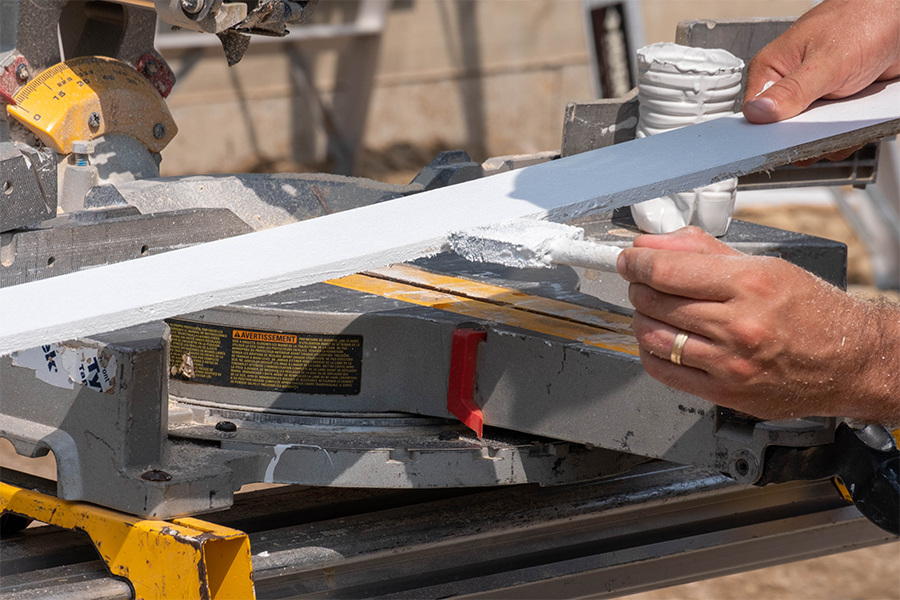Business Advice3 min
Get The Most From Your Trim & Siding Warranty
One of the biggest frustrations facing builders and homeowners alike is finding out a minor discrepancy in installation has triggered an exclusion from warranty coverage. We've gathered our top siding tips and watchouts for professionals to help with the installation process and instill confidence in homeowners.
Tips for Getting the Most Out of Your LP SmartSide Trim & Siding Warranty
When you're in the zone, it can be easy to let small details fall to the wayside. Keeping these best practices for re-siding a house top-of-mind will help ensure you get the most out of your products and the warranty that comes with them.
Properly Cut and Seal All Trim and Siding
When you cut LP® SmartSide® Trim & Siding, use the recommended LP SmartSide installation tools: a circular saw or miter saw and a nail gun or drill. Do not saw or rip the product lengthwise unless the instructions allow for it.
When you cut your trim and siding materials, you are left with an exposed edge. Each cut edge on LP SmartSide products should be sealed by applying a coating or sealant to help protect the product from the elements. Touch-up paint in LP® SmartSide® ExpertFinish® colors is available to be used on cut edges as well as spot treatment for any minor knicks or scratches.

Choose the Correct Paint for Your Siding Material
When it comes to painting, the siding material you are working with will help dictate what kind of paint to use. For best results, follow this guide:
For primed smooth trim and siding, use satin finish paint
For primed cedar texture trim and siding, use satin or semi-gloss paint
For ExpertFinish trim and siding, use the ExpertFinish touch-up paint kit for knicks, cut edges, etc.
Check out our quick guide for tips on how to properly paint siding.
Correctly Install Siding
When installing lap siding or other LP SmartSide materials to a structure, be sure the product is not in direct contact with masonry, concrete, brick, stone, stucco or mortar. Use nails for lap siding installation and refrain from the use of staples on all LP SmartSide products to help ensure secure installation.

Store Items Properly
When you think of contributing factors that will void your warranty you likely think of larger product usage or siding installation mistakes, but how you store your material before and during your project is just as important. When storing trim and siding products, keep them dry and off the ground and be sure to store on a flat surface.
When in doubt, refer to the product warranty and instructions for detailed guidelines to get the most out of your siding.
Looking to brush up on installation details? We’ve gathered all of our official LP SmartSide installation instructions and tutorials from professionals in one place. Get started here.
Continue Reading
Resiliency Solutions
5 minIntroducing LP® SmartSide® ExpertFinish® Naturals Collection™: Nature-Inspired Beauty Meets Engineered Performance
We’re excited to introduce the LP® SmartSide® ExpertFinish® Naturals Collection™, a bold new addition to our trusted line of engineered wood siding and trim that delivers the warmth and beauty of nature with the advanced protection and performance builders and homeowners expect.
Labor Solutions
5 minChoosing the Right LP® Structural Solutions Product for Your Build
When it comes to building strong, reliable, and high-performing structures, the materials you choose matter. At LP Building Solutions, we understand that every project, whether it's a single-family home or a multifamily development, requires structural components that meet your needs for strength, durability, and efficiency.
Sustainability Solutions
5 minBuilding a More Sustainable Future with LP Building Solutions
In today's world, sustainability is no longer just a buzzword, it's a blueprint for responsible living and smarter building. As the construction industry seeks ways to reduce its environmental footprint, LP Building Solutions is focused on providing innovative building materials for eco-conscious builders to help reshape what it means to build sustainably
News & Stories3 min
History of Partnership with Gary Sinise Foundation
The LP Foundation is a proud partner of the Gary Sinise Foundation, which supports wounded veterans in several ways. You can learn more about the LP Foundation here.